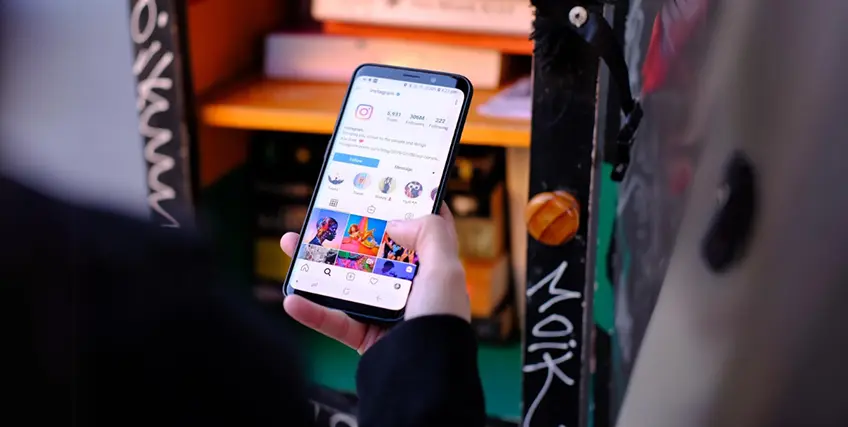Is Influencer Marketing the Right Way to Grow Your Business?
March 27, 2025 | Last Updated on: March 28, 2025

Is Influencer Marketing the Right Way to Grow Your Business?
When it comes to small business marketing strategies and how to grow your small business, email marketing, social media marketing, and search engine optimization (SEO) led the way for a long time. However, with the rise of TikTok, Instagram, Facebook, and YouTube as marketing channels, influencer marketing has emerged as one of the best strategies for entrepreneurs to grow your small business.
Consider these statistics:
- It’s forecasted that 86% of marketers and small businesses in the United States will use influencer marketing in 2025. This means your competitors may already be using influencers to fuel their business growth.
- Influencer marketing yields an average ROI of $6.50 for every dollar spent on campaigns.
- In 2025, more than half of all brands plan to increase their marketing spend on influencers, with 11.9% planning to allocate more than 40% of their digital marketing budget to influencers.
If you want to know how to use influencer marketing to grow your small business and increase your bottom line, keep reading.
What is Influencer Marketing?
Influencer marketing is a marketing strategy that leverages popular social media users and bloggers to grow your small business. Influencers are paid to create sponsored content that promotes products and services. The content is then shared on social media platforms. Popular influencer marketing channels include X, Facebook, Instagram, YouTube, and LinkedIn.
Influencer marketing is especially effective for people looking for how to grow new business in niche markets. These include:
- Food
- Beauty
- Business
- Travel
- Finance
- Health and Fitness
How to Grow Your Business With Influencer Marketing
Small businesses need cost effective marketing strategies that get results. Influencer marketing campaigns can connect your brand with your ideal customers by leveraging the rapport that influencers have already built with their audiences.
Influencers excel at forging meaningful connections with their followers. As a result, when they recommend a product, it increases the likelihood that their followers will buy it.
The benefits of using influencer marketing to grow your small business include:
- Higher engagement with potential customers
- Increased conversion rates
- A loyal customer base
- Community building with like-minded consumers
- Generates more new customers than other marketing strategies
- High return on investment (ROI)
- The potential for a campaign to go viral and take your business to the next level
Types of Influencers
Several types of influencers can help grow your small business. A digital marketing agency can determine which type of influencer is best for your business.
Nano-Influencers
Nano-influencers are relatively new on the influencer marketing front. They have a smaller number of followers, usually less than 1,000. However, these influencers usually carry a lot of weight within their communities. What’s more, they have higher engagement rates than other types of influencers.
Because nano-influencers have such small audiences, they’re utilized more in local marketing. They’re not always the best choice for companies that want to reach a wider geographical area but they can be a solid choice for those looking for how to grow new business in a concentrated area.
Micro-Influencers
Micro-influencers typically have from 1,000 to 100,000 followers. They usually have a niche following and reach specific audiences. Most small businesses use these types of influencers.
Micro-influencers have a more active and engaged following. Their audiences tend to be loyal and responsive to brand recommendations. Typically, these influencers are experts in the fields they promote so can be highly effective in helping grow your small business.
Micro-influencers are available at a low cost compared to influencers with larger audiences. What’s more, many top brands including Lululemon, Peloton, Blue Apron, Fabletics, and MAX Cosmetics, have successfully partnered with micro-influencers.
Macro-Influencers and Celebrities
Macro-influencers have the largest audiences, with followers ranging from 100,000 to several million. They are often celebrities and command a higher fee for the content they post.
Macro-influencers have access to the best creative resources and tools. However, they lack the engagement that micro-influencers often have, so while you can still use them to grow your small business, you have to be thoughtful in when you engage them.
How Much Does Influencer Marketing Cost?
Various factors impact pricing for influencer marketing. These include:
- The platform used
- Type of content
- Product or service being promoted
- Who the influencer is, their range of popularity, and how much they charge
- The length of the campaign
- Pricing model, i.e., according to clicks, posts, subscribers, views, etc.
- Exclusivity clauses, i.e., whether the influencer posts only for your brand or is allowed to promote other brands
An influencer marketing agency can charge anywhere from $1,000 a month to $20,000 a month per campaign, and can pair influencers with your brand. If you decide to find our own influencers, the price you pay will just depend on who you decide to use to help grow your small business.
How to Grow Your Small Business With Influencer Marketing
Research the Influencer Marketing Industry
Perform market research to understand the dynamics involved in influencer marketing. You should also learn how to find influencers that are a good match for helping you grow your small business. This will help you optimize your strategies and enhance your offerings.
Define Your Marketing Goals
Before contacting an influencer, outline your marketing campaign goals. Some small businesses want to increase brand awareness. Many brands set out to increase leads and sales. Others want to create buzz about a new product or service they’ll offer. Detail the goals you have to grow your small business so you can be clear about your expectations.
Choose the Right Influencer
This is probably one of the most important factors. Find influencers that are a good fit for your brand. These will be influencers who are already posting content relating to your industry. For example, if you own a hotel or hospitality business, partner with a travel or hospitality influencer. If you own a fitness center, choose an influencer who is an avid fitness buff or expert. Or alternatively, choose someone who is new to fitness, and let followers see their transformation journey.
You can easily find influencers on Instagram by using hashtags. For example, if you have a boutique hotel, a travel influencer would be a good match. You’d find well-matched influencers by using hashtags like #luxurytravel, #travelcreators, #professionaltravelers, etc. You can also find influencers on platforms like Upfluence, BuzzSumo, Influencity, and others.
The idea is to form strategic partnerships with the best influencers within your niche. You may opt to run two or three campaigns with different influencers. Or you can partner with one exclusively to grow your small business.
Get the Right Software
The right software is paramount to grow your small business through influencer marketing. The best tools and software platforms can help:
- Automate tasks
- Plan and execute influencer marketing campaigns
- Track and measure campaign performances
CRM software is vital for optimizing campaigns. Influencer marketing software and platforms like Sprout Social, Upfluence, Afluencer, and Brandwatch are other software and platforms to consider.
Develop a Comprehensive Business Plan
Every successful business begins with a business plan. A business plan is a blueprint for your company and will guide you as you grow your small business. It should include:
- Your target market
- Objectives and goals
- Information on your business’s competition
- Industry trends
- Growth strategies
- Financial documentation, including bank account statements, cash flow sheet, and tax returns
Your business plan should help you navigate your business journey and empower you to make informed decisions as you grow your small business.
Paying For An Influencer Campaign
If you’re a small business operating locally through micro-influencers, you should have no trouble finding a partner who will promote your company within any budget. But if you really want to grow your small business and you’re ready to make a big splash with the launch of a new product or service, then you may need to invest in a top tier influencer to get the word out.
If you don’t have the cash on hand to make this investment, small business financing can provide you with the working capital you need to hire more prominent influencers and reach a larger market. Alternative lending specialists offer a wide range of financial solutions that can help you achieve your goals.
Final Thoughts
If you’re ready to grow your small business, influencer marketing may be just the thing your small business needs. Just remember that alignment is everything—alignment between your brand and the influencer, and alignment between the influencer’s followers and your target customer.
Hiring a digital marketing agency can take some of the load off so you can focus on running your business. Small business financing can help you cover marketing expenses as well as many other small business needs if your cash flow is running short.
FAQs
What is the most popular influencer marketing channel?
Instagram ranks as the top channel for influencer marketing. Facebook and TikTok come in second and third. More than 84% of influencers post content on Instagram, while 62.3% use Facebook, and 46.8% post on TikTok.
What is the average ROI for influencer marketing?
Influencer marketing has an average ROI of 650%, which is right on par with email marketing.
What are the three Rs of influencer marketing?
Relevance, reach, and resonance are three essential strategies in influencer marketing. Relevance ensures the influencer content aligns with your target audience and marketing goals. Reach refers to the number of followers likely to view the influencer’s content and resonance is how well the content connects with followers.
What are the requirements for a small business loan?
Business owners are more likely to get approved with a credit score of 650 or higher, although an alternative lender may consider a score as low as 575. Financial documentation, time in business, and annual revenue are also considered for a business loan. Some lenders require collateral to approve the loan.
What if my cash flow is irregular? Can I still get a digital marketing loan?
Some loan solutions are geared to bolster your business’s cash flow and provide the working capital needed to grow your small business. You may still get approved for financing as long as you can provide proof of long-term success and otherwise solid financials.




